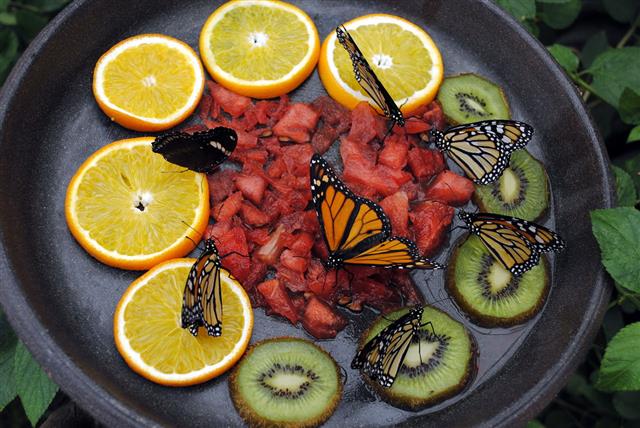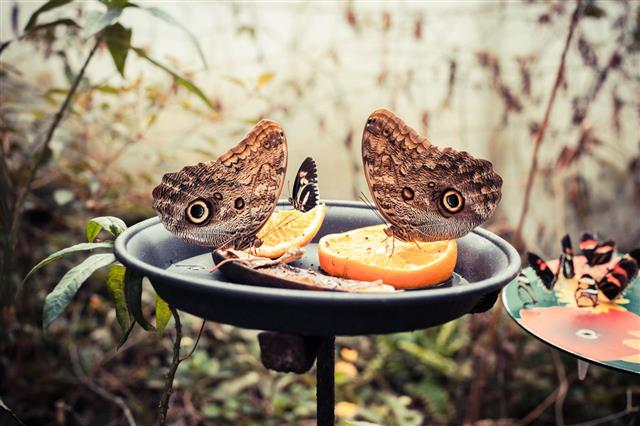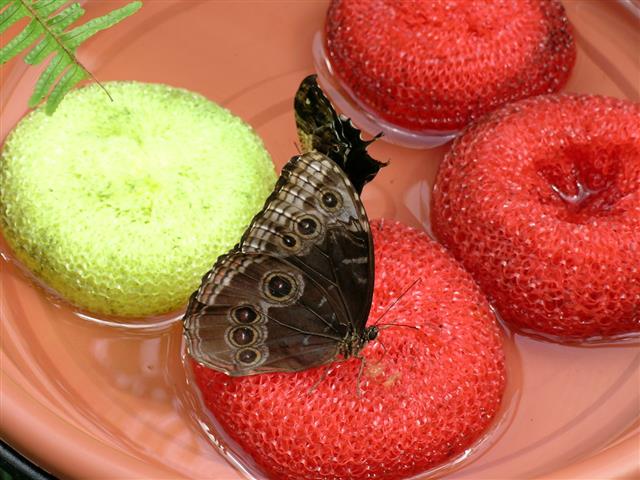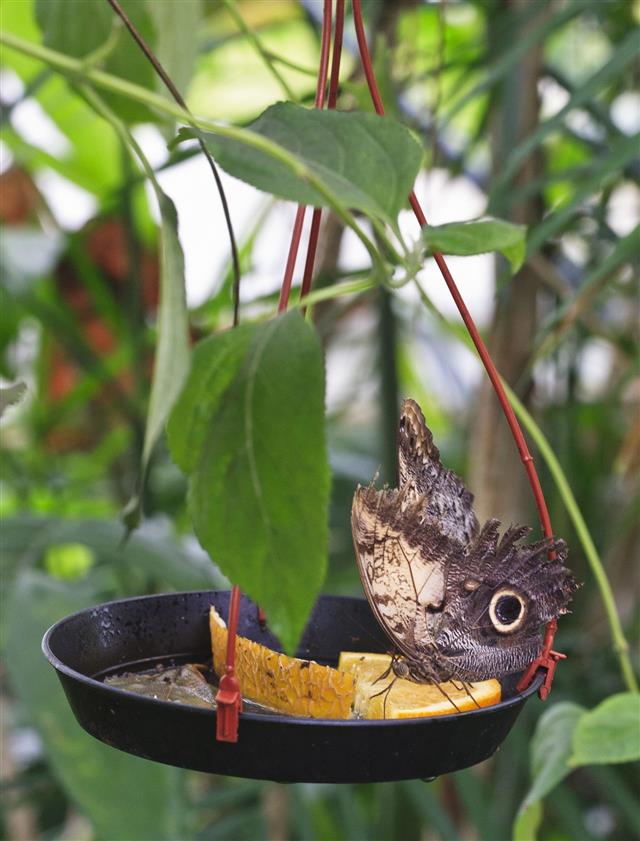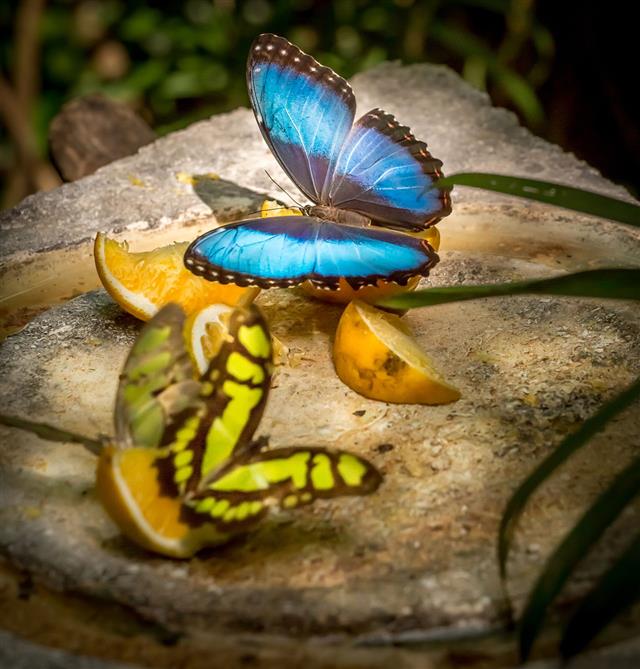
Butterflies are important to the growth of outdoor gardens as they help to pollinate flowers. Here are some homemade butterfly feeder Ideas.
Quick Tip
If you live in a dry region, prepare nectar for the butterflies with a fructose mixture, rather than using regular sugar. This is because it is believed that dry weather causes the sugar to recrystallize in the insects’ stomachs, leading to their deaths.
Just the sight of a butterfly fluttering nearby, brings a sense of peace and tranquility to the mind. They play a very important ecological role, second only to bees in productive pollination for plants.
While one can attract butterflies by growing a number of plants, an easier way to lure these insects is by making and using your own butterfly nectar and feeders. Let us take a look at how to make a butterfly feeder with items that are easily available at home.
Butterfly Feeder DIY Methods
Method 1:
- For a very basic feeder, simply use a metal, plastic, or glass dish, which has a curved rim. These are easily available in local stores.
- Just put the butterfly food in the dish and place it in an outdoor area which is safe from pests such as squirrels and ants.
Method 2:

1. You can create a simple hanging butterfly feeder plate with some twine and a plastic plate.
2. Cut four strings of twine, each of them around four feet long.
3. Drill 4 holes on the lip of the plate, equidistant from each other.
4. Fold the twine strings in half and thread them through the holes on the plate before tying them together with another piece of string.
5. Tie the string to a branch of a tree in the garden so that it is safe from predators. The hanging butterfly feeder plate is now ready to use.
Method 3:
1. You can also create an effective butterfly feeder with a glass jar, a clean sponge, and some twine.
2. Punch a hole through the lid of the jar, with a hammer and a nail.


3. Now, cut the sponge in such a way that it should fit tightly in the hole on the lid of the jar. Place the sponge in the lid.

4. Decorate the jar with brightly colored stickers or tape to increase the chances of attracting butterflies.

5. Fill the jar with your nectar mixture and close the lid. The sponge will get soaked in the mixture.
6. Make a hanger from the twine, by tying the string around the neck of the jar. Take two pieces of string and tie them to the piece that is secured around the neck of the jar. Do it in such a way that both ends of a string should be secured on opposite sides of the jar, creating a loop. Tie the two stings perpendicular to each other to provide stability.

7. Invert and place the jar in the hanger, near the flowers in your garden.
8. Clean the jar and replace the nectar every few days, to keep attracting butterflies.
Method 4:
- Fill a saucer or plate with fine gravel.
- Soak the gravel generously with the nectar mixture.
- Place the butterfly puddle in a place which is easily accessible to the butterflies.
Other Easy Butterfly Feeder Ideas:
- Place fruits on a rock outcropping in the garden, which will serve as a makeshift butterfly feeder, while keeping the look natural.
- Soak a red or orange sponge with the nectar mixture. Place the sponge in an open area. The butterflies will land directly on the sponge and feast.
- If you are artistically inclined, you can design your own feeder dish with plaster, and paint it in bright colors to attract the butterflies.
Butterfly Feeder Nectar Recipes
Method 1:
A sugar-water mixture is one of the most commonly used nectar substitutes. One simply has to boil and dissolve sugar in water, in a 1:4 ratio, to create the nectar. Once the mixture has cooled, it can be poured into the feeders in small amounts. You can also add tiny amounts of red food coloring to the mix to attract more butterflies.
Method 2:
An alternative food mixture is to mix a paste of overripe bananas with an equal amount of brown sugar. However, for even better results, add a bottle of strong beer to the banana mixture, and let it ferment for a few days before offering it to the butterflies. Other fruits such as papayas and apples can also be used (the more overripe/rotten the better).
Although some people use only pieces of fruit in their feeders, this is not as effective as the fermented versions. Both recipes can be refrigerated and stored for many days. Besides, the nectar recipes can also be used for hummingbird feeders. So, what are you waiting for? Go, create a butterfly-friendly garden of your own.
